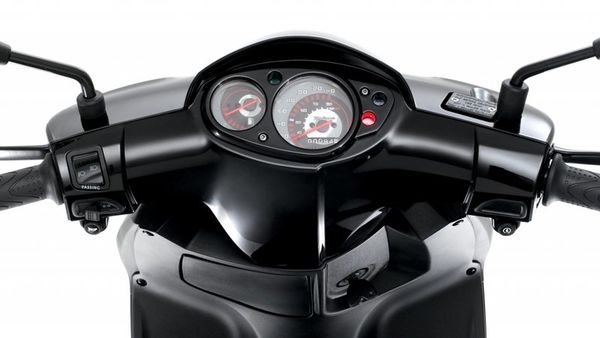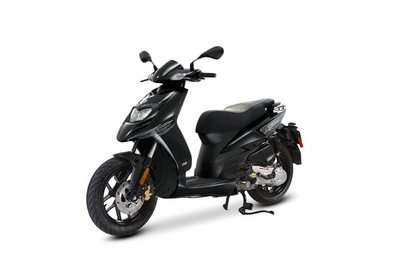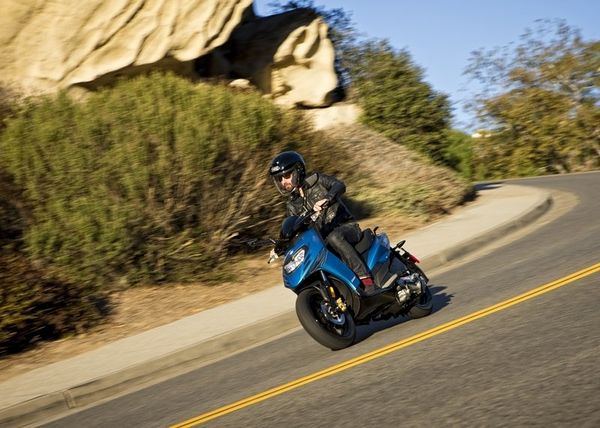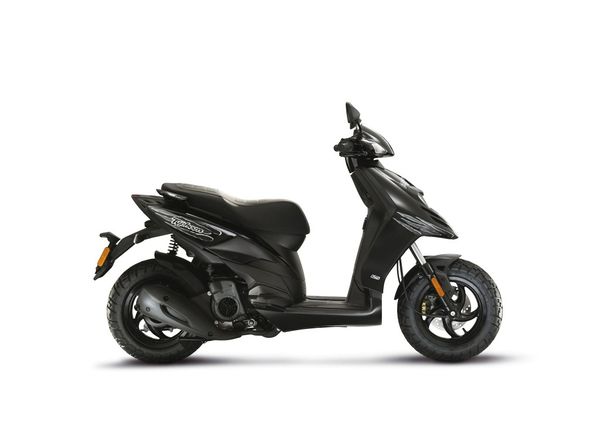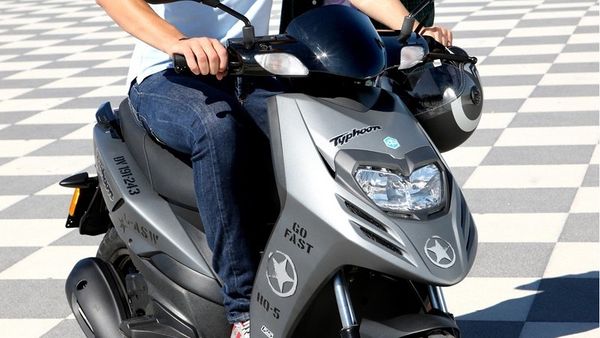Piaggio TYPHOON 50 4S 4V: review, history, specs
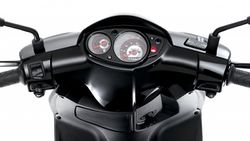 |
|
| Piaggio TYPHOON 50 4S 4V | |
| Manufacturer | |
|---|---|
| Production | 2017 |
| Class | Scooter |
| Engine | 4-stroke 4-valve |
| Bore / Stroke | 38.1mm x 38.1mm |
| Horsepower | 4.56 HP (3.4 KW) @ 9500RPM |
| Torque | 2.95 ft/lbs (4.0 Nm) @ 8000RPM |
| Fuel System | Injection |
| Transmission | Gear box: Automatic CVT Final Drive: Belt |
| Suspension | Front: Telescopic hydraulic fork, stroke: 76 mm Rear: Engine acts as a swingarm, one hydraulic shock absorber with preload adjustment; stroke: 86mm |
| Brakes | Front: 220 mm disc brake with two-piston floating caliper Rear: 140 mm drum brake |
| Front Tire | 120/70 14 |
| Rear Tire | 120/70 14 |
| Wheelbase | 53.11 inches (1349 mm) |
| Length | 76.3 inches (1938 mm) |
| Width | 28.31 inches (719 mm) |
| Seat Height | 30.31 inches (770 mm) |
| Weight | 110.0 kg (wet) |
| Manuals | Service Manual |
The Piaggio TYPHOON 50 4S 4V was a 4-stroke 4-valve scooter produced by Piaggio in 2017. Max torque was 2.95 ft/lbs (4.0 Nm) @ 8000 RPM. Claimed horsepower was 4.56 HP (3.4 KW) @ 9500 RPM.
Engine[edit | edit source]
A 38.1mm bore x 38.1mm stroke result in a displacement of just 49.0 cubic centimeters.
Drive[edit | edit source]
The bike has a Automatic CVT transmission. Power was moderated via the Automatic centrifugal dry clutch.
Chassis[edit | edit source]
It came with a 120/70 14 front tire and a 120/70 14 rear tire. Stopping was achieved via 220 mm disc brake with two-piston floating caliper in the front and a 140 mm drum brake in the rear. The front suspension was a Telescopic hydraulic fork, stroke: 76 mm while the rear was equipped with a Engine acts as a swingarm, one hydraulic shock absorber with preload adjustment; stroke: 86mm. The wheelbase was 53.11 inches (1349 mm) long.
2017 Piaggio TYPHOON 50 4S 4V[edit | edit source]
Frame construction between the 50 and 125 are almost identical, with the larger 125 and 150 model sporting an additional buttress around the engine mount to support the extra weight. Hydraulic forks cushion the front end, and a single, coil-over shock supports the rear from its offset position on the motor-side of the swing-mount drive unit, and it comes with a spring-preload adjustment.
